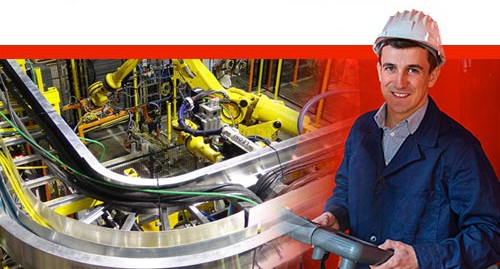For over 50 years, we have dedicated ourselves to providing Industry with best in class wire management solutions and to helping solve mission critical issues.
The needs of today’s schools and universities are changing fast. When it comes to anticipating and meeting those needs, MonoSystems is in a class of its own.
For the past five decades, we’ve made it our business to offer more value to our partners, which in turn provides greater value to their customers.
Ultimate Checklist for Choosing the Best Metal Cable Tray for Your Project Needs
When selecting the right equipment for any project, the importance of choosing a reliable and efficient metal cable tray cannot be overstated. As industries around the globe evolve, the demand for high-quality metal cable trays that ensure durability and optimal performance has surged. With China's reputation as a top manufacturer in this field, renowned for its cutting-edge production techniques and innovative designs, it has established a global export footprint that serves various sectors. This ultimate checklist aims to guide you through the essential factors to consider when selecting a metal cable tray, ensuring it meets the specific needs of your project. From material specifications to regulatory compliance, understanding these aspects will empower you to make an informed choice, ultimately enhancing the safety and efficiency of your electrical installations.

Key Factors to Consider When Selecting a Metal Cable Tray for Your Project
When selecting a metal cable tray for your project, there are several key factors to consider to ensure you make the right choice. First, evaluate the material composition of the cable tray. Options such as aluminum, stainless steel, and carbon steel each have specific properties that influence performance and durability. For instance, stainless steel is ideal for corrosive environments, while aluminum is lightweight and offers excellent corrosion resistance. Understanding the environment in which the tray will be installed is crucial in making this decision.
Another essential factor is the tray's load capacity and width. Depending on the volume and type of cables you plan to use, ensure the tray can accommodate these without risking damage or overcrowding. Consider any future expansion needs as well; selecting a tray that can handle a larger load than currently required might save you from costly upgrades later. Finally, factor in installation ease and the availability of accessories, such as connectors and hangers, which contribute to a more efficient and reliable installation. By considering these aspects, you can select a metal cable tray that effectively meets your project needs.
Comparing Material Options: Steel vs. Aluminum in Cable Tray Design
When selecting the right cable tray for your project, understanding the material options is crucial. Steel and aluminum are the two primary choices, each offering distinct advantages that cater to different needs. Steel cable trays are renowned for their strength and durability, making them ideal for heavy-duty applications. They are often treated with coatings to prevent corrosion, ensuring longevity in harsh environments. However, the added weight of steel can be a disadvantage in certain installations, where versatility and ease of handling are required.
On the other hand, aluminum cable trays present a lighter alternative that does not compromise on strength. Their resistance to rust and oxidation makes them suitable for outdoor and humid environments. Aluminum is also easier to install and maneuver, reducing labor costs and time on projects. Additionally, the aesthetic appeal of aluminum can be a deciding factor for installations in visible areas. Ultimately, the choice between steel and aluminum cable trays depends on the specific project requirements, environmental factors, and budget considerations, ensuring that each project gets the best fit for its needs.
Ultimate Checklist for Choosing the Best Metal Cable Tray
Understanding Load Capacity and Its Impact on Your Project's Success
When selecting the right metal cable tray for your project, understanding load capacity is pivotal. Load capacity refers to the maximum weight a cable tray can safely support without compromising its structural integrity. This factor is crucial because underestimating the required load can lead to catastrophic failures, resulting in costly repairs, project delays, and potential safety hazards. Therefore, a thorough assessment of the expected load, including the weight of cables and additional equipment, is essential during the planning phase.
Moreover, various types of cable trays come with different load capacities. For instance, ladder trays and perforated trays offer distinct advantages depending on the installation environment and the specific cable arrangements. It's critical to evaluate the operational conditions—such as temperature fluctuations and exposure to chemicals—that may affect the tray's performance over time. By carefully considering both the immediate load requirements and the long-term durability of the chosen cable tray, you can ensure your project runs smoothly, paving the way for success and reliability in your electrical installations.
Customization and Accessories: Tailoring Metal Cable Trays to Your Needs
When selecting a metal cable tray for your project, customization is crucial to meet your specific needs. The variety of options available allows for adjustments in size, shape, and finish, ensuring that your cable management system aligns perfectly with the layout of your workspace or project environment. Consider options like adjustable dividers or varying heights to optimize space management. Custom solutions can also enhance the aesthetic appeal, providing a sleek, professional look to your installations.
In addition to customization, integrating accessories can significantly enhance the functionality of your metal cable trays. Features like cable anchors, covers, and thermal insulation help not only in organizing cables but also in protecting them from damage and interference. Just as a workspace benefits from organized setups and innovative designs, implementing these accessories into your cable management system can lead to a smarter, cleaner, and more efficient working environment, allowing you to focus on what truly matters—your project. Tailoring metal cable trays with the right customization and accessories transforms them from mere utility into an essential component of your workspace strategy.

Installation Tips for Maximizing Efficiency with Metal Cable Trays
When installing metal cable trays, proper planning and execution can significantly enhance efficiency and safety in your project. A report from the National Electrical Manufacturers Association (NEMA) highlights that well-installed cable management systems can improve installation times by up to 30%, ultimately reducing labor costs. This efficiency stems from minimizing cable congestion and facilitating easier access for maintenance and upgrades.

Moreover, selecting the right type of metal tray—be it ladder, ventilated, or solid bottom—is crucial. According to industry analysis, metal cable trays can support loads ranging from 20 to over 500 pounds per linear foot, depending on design and materials. Ensuring that your installation adheres to these load specifications not only promotes safety but also extends the lifespan of your electrical systems.
Additionally, consider integrating accessories like turnarounds, supports, and covers to optimize cable routing and protection during installation. By following these tips, you can maximize the functionality and longevity of your cable trays.


